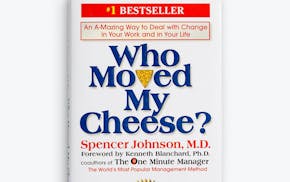A man and his father are traveling by car. The car stalls at some railroad tracks. A train comes along and hits the car. The father is killed instantly. The man is severely injured. They take the man to the hospital. The surgeon takes one look at the man and says, "I can't operate on this man. He is my son!"
How can that be?
Answer: The surgeon is his mother.
I've been posing this riddle during many of my speeches for years and asking how many people got it. The number of hands that shoot up has increased dramatically. Today it is nearly 30 to 40 percent. Fifteen years ago it was only 5 to 10 percent. Ten to 15 years from now, I hope it will be near 100 percent.
Why do I bring this up? March is Women's History Month, highlighting the contributions of women in history and contemporary society. International Women's Day is March 8.
It's interesting to note that Women's History Month traces its beginnings back to 1911, when the California school district of Sonoma started a Women's History Week. But it wasn't until 1980 that President Jimmy Carter issued a proclamation declaring the week of March 8, 1980, as National Women's History Week.
The proclamation stated: "From the first settlers who came to our shores, from the first American Indian families who befriended them, men and women have worked together to build this nation. Too often the women were unsung and sometimes their contributions went unnoticed. But the achievements, leadership, courage, strength and love of the women who built America was as vital as that of the men whose names we know so well."
Throughout the next several years, Congress continued to pass joint resolutions designating a week in March as Women's History Week. In 1987, March was officially declared Women's History Month by Congress.
Of course, women have always worked in this country, but they became most visible during World War II, when women worked on the production lines on many of the supplies for the war effort. Remember Rosie the Riveter and the motto commonly associated with her image? "We can do it." But those jobs returned largely to men after 1945, and there was a perception that women were no longer qualified for those jobs. It took another 30 years to establish that skills, not gender, determine the ability to perform on the job.
Women have been fighting to prove their worth in the workplace for generations. Progress has been steady, but there is plenty of room for improvement.
Here are the stats from just a few months ago from colleges and universities across the United States:
61 percent of all the pharmacy graduates are women.
41 percent of MBA students are women.
47 percent in law school are women.
48 percent in medical school are women.
The number of women entrepreneurs is multiplying two to four times faster than men, depending on which part of the country you study. Last year, 74 percent of all start-up companies were founded by women. According to Carlson Wagonlit Travel, female business travelers will equal their male counterparts in three to five years, up from 18 percent 25 years ago.
The statistic that really grabs my attention is that women entrepreneurs and business owners employ more people than the Fortune 500 companies combined.
Still, salary disparities persist. The gap is narrowing but not quickly enough.
I like the story about a first-grade teacher who asked her students to fill in the blanks on famous sayings. On the blackboard, the teacher wrote, "A miss is as good as a ______." Immediately a little girl raised her hand and said, "A miss is as good as a mister."
Mackay's Moral: History is herstory too.
Harvey Mackay is a Minneapolis businessman. Contact him at 612-378-6202 or e-mail harvey@mackay.com.
Mackay: Approach AI with a mindset of collaboration rather than fear

Mackay: The key to winning in sports, business and life is practice

Mackay: Humor can make even dire situations bearable

Mackay: Want a raise? How and when you ask for it matter


